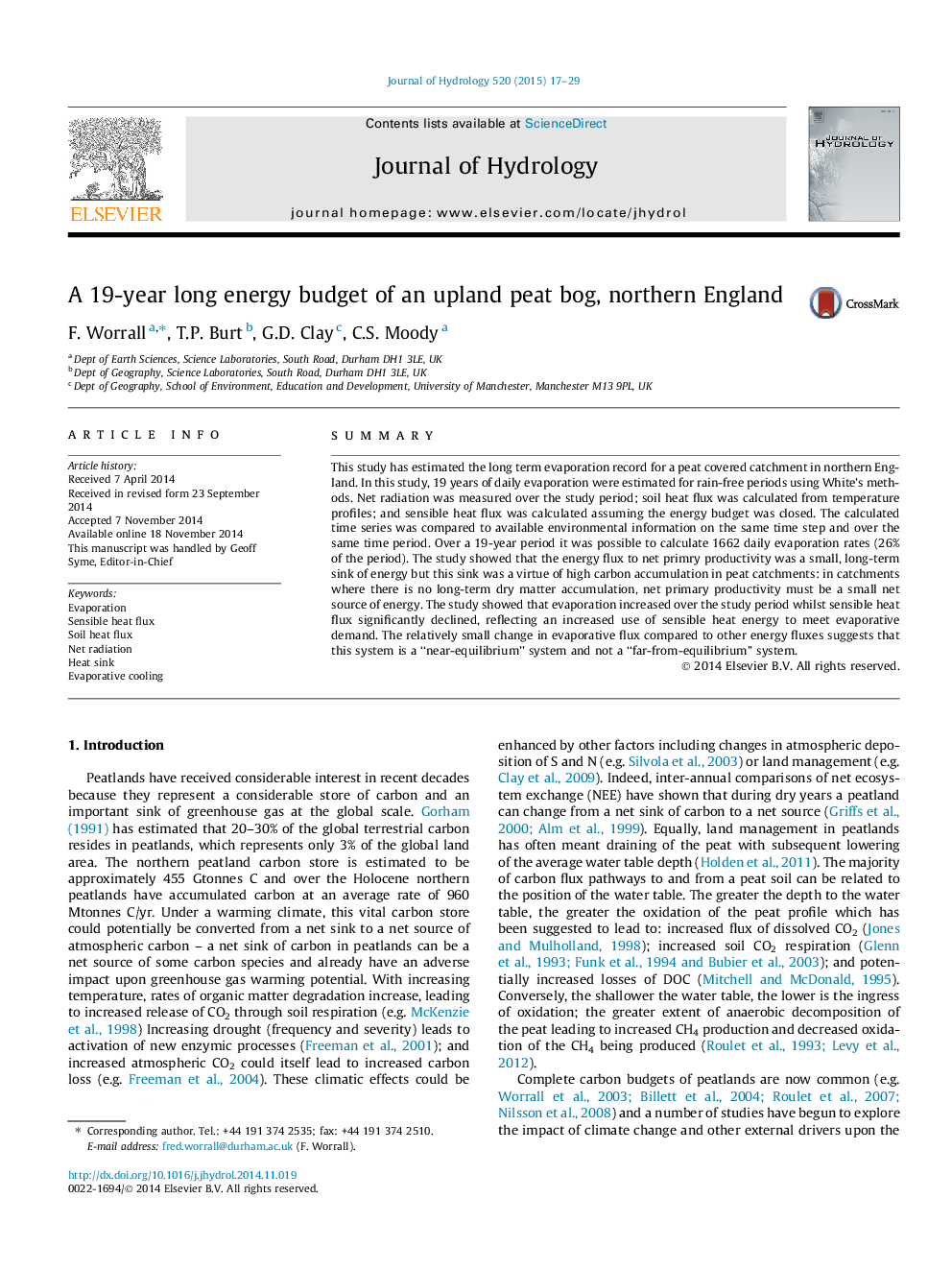| Article ID | Journal | Published Year | Pages | File Type |
|---|---|---|---|---|
| 6411813 | Journal of Hydrology | 2015 | 13 Pages |
â¢19 year time series of energy budget was calculated.â¢Energy flux to primary productivity occurred by virtue of high carbon accumulation.â¢Evaporation increased whilst sensible heat flux significantly declined.â¢There was increasing use of sensible heat energy to meet evaporative demand.â¢This system is a near to equilibrium system and not a far from equilibrium system.
SummaryThis study has estimated the long term evaporation record for a peat covered catchment in northern England. In this study, 19Â years of daily evaporation were estimated for rain-free periods using White's methods. Net radiation was measured over the study period; soil heat flux was calculated from temperature profiles; and sensible heat flux was calculated assuming the energy budget was closed. The calculated time series was compared to available environmental information on the same time step and over the same time period. Over a 19-year period it was possible to calculate 1662 daily evaporation rates (26% of the period). The study showed that the energy flux to net primry productivity was a small, long-term sink of energy but this sink was a virtue of high carbon accumulation in peat catchments: in catchments where there is no long-term dry matter accumulation, net primary productivity must be a small net source of energy. The study showed that evaporation increased over the study period whilst sensible heat flux significantly declined, reflecting an increased use of sensible heat energy to meet evaporative demand. The relatively small change in evaporative flux compared to other energy fluxes suggests that this system is a “near-equilibrium” system and not a “far-from-equilibrium” system.
